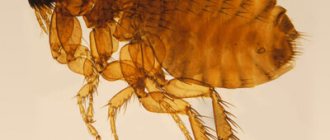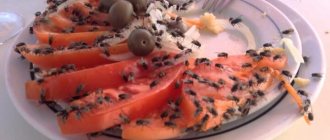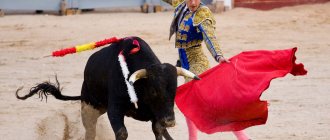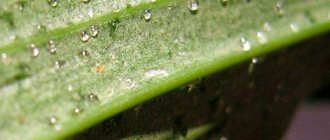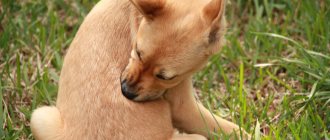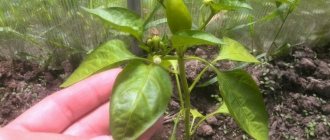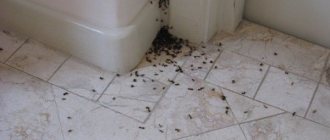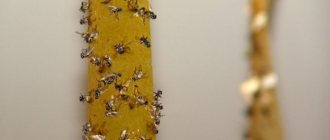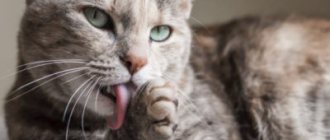In this article you will find out why a rooster's comb turns black, what diseases this symptom indicates, and whether it can be cured. A rooster's comb serves not only for beauty and to attract females, but is also an indicator of his health. A change in the bright red color of the comb to any other color may indicate a problem in the bird's body. We will tell you about the reasons for this phenomenon and what to do to avoid losing your pets.
Causes of blackening and swelling of the comb in chickens and roosters
It is almost impossible to clearly name the reason for the darkening of the comb in poultry. To do this, it is necessary to analyze the behavior, appearance, nutrition and living conditions of the chicken or rooster. The reason for a change in the color of the comb can also be a serious infectious disease of chickens, which threatens the entire population of birds. Therefore, it is necessary to determine the cause of the blackening of the ridge as early as possible and begin appropriate treatment. Perhaps only a veterinarian can help with this difficult matter.
A list of diseases common to chickens and roosters, a characteristic sign of which is a change in the color of the comb:
- avitaminosis;
- pasteurellosis (cholera);
- bird flu;
- frostbite.
conclusions
In comfortable conditions with proper nutrition, the likelihood of developing the above pathologies is unlikely. Owners need to carefully observe the behavior of birds in the chicken coop. This will help to detect signs of impending danger in a timely manner.
Blue or blackening of the comb in hens or roosters in the summer is a bad sign indicating infection. In summer, the bird receives the necessary vitamins and cannot get frostbite.
It is necessary to take immediate action - in the early stages it is easier to carry out treatment and avoid infecting the entire flock.
If you have encountered the situations described in the article, please tell us in the comments how you dealt with them. We will be grateful for your repost and 5 stars.
Avitaminosis
The disease most often affects adults kept in cages, since they do not eat natural food. Vitamin deficiency develops due to a lack of vitamins or minerals.
Symptoms:
- the comb and earrings turn black or pale;
- poultry weight loss;
- lethargy, general weakness;
- feather loss;
- swelling of the paw joints;
- exhaustion and dehydration;
- birds can take uncharacteristic poses, throw their heads back;
- decreased egg production in chickens and reproductive function in roosters;
- against the background of vitamin deficiency, eye diseases occur (for example, conjunctivitis), sometimes leading to complete blindness.
For treatment, it is necessary to introduce cake, herbal flour, chalk, zucchini, and brewer's yeast into the diet. You also need to give poultry only special balanced food with vitamins and minerals.
It is necessary to monitor the composition of feed, since some types of fish (it is added in the form of bone meal) lead to the destruction of vitamin B1 (thiamine) in the body of chickens.
Helminth of the cecum
Helminths of the cecum, parasitizing in the body of birds, cause inflammatory processes in the cecum and slow down the growth of young animals. In addition, this helminth is the host of protozoan pathogens that cause enterohepatitis (“black head”) in chickens and turkeys.
Cleanliness of walking areas, their alternation and digging up the soil on walking areas after being freed from birds, as well as keeping adult birds and young animals separately, usually prevent mass infection by helminths.
An effective remedy against cecal helminths is phenothiazine, which is fed to birds along with food.
Pasteurellosis (cholera)
The causative agent of this disease is a virus, so pasteurellosis can destroy the entire poultry house in a short period of time. The infection is transmitted by airborne droplets, water and food. The disease affects both young and adult animals.
Pasteurellosis is often a consequence of insufficient disinfection of the premises, contact of poultry with stray and wild animals.
- darkening of the comb and earrings;
- temperature increase;
- wheezing, mucus discharge from the nostrils and sometimes the mouth;
- loose, foamy stools;
- thirst and refusal to eat;
It is necessary to begin treatment of the bird on the very first day of the disease, and preferably in the first hours, since in this case there is a greater chance of success.
First, you need to isolate the sick animal until it recovers. For treatment, veterinarians advise using strong antibiotics. Typically, a solution of tetracycline (2%) or norsulfazole is used (dosage half a gram at a time). Sulfa drugs are also effective, for example, sulfamethazine in a dosage of one-tenth of a percent of water and one-half of a percent of food. Treatment lasts for 10-14 days.
After removing a sick animal, it is necessary to disinfect and ventilate the entire chicken coop, since the infection can persist in the air, litter or feathers of the sick bird.
Usually it is recommended to whitewash the walls of the chicken coop with lime and spray smoke bombs in the room itself. If the bird is not cured and dies, then its body must be burned, since the virus persists for a long period in the animal’s corpse. Cured and healthy chickens and roosters are given greens, vitamins and minerals for prevention.
Contact of birds with the main vectors of pasteurellosis (rodents are their role) must be minimized. To avoid infection, chickens are vaccinated at an early age with a special anti-cholera serum. This way you don’t have to worry that the entire poultry house will be destroyed by a viral disease.
Experienced poultry farmers advise
If a chicken breaks its leg
In case of injuries, a distinction is made between open (bone protruding) and closed fractures.
Required:
- Straighten the bones.
- Disinfect the wound.
- Apply a splint.
- Bandage it.
- Cut off the feather.
The chicken broke its leg
If the wing is broken
In case of dislocation (the injured area is swollen and reddish) and incomplete fracture of the wing, the injury area is tightly bandaged. When a chicken has a broken wing, you will need to bandage it to the body. The hen will not be able to move it, causing herself pain and making recovery difficult.
The bird is restrained from moving until it recovers. It is advisable to organize separate content. Similar injuries heal within 2 or 3 weeks.
If the skin of the neck is injured
At times, wounds appear when other animals inflict injuries.
Necessary:
- Cleansing the wound.
- Cleaning feathers near the injured area.
- Washing with potassium permanganate.
- Lubrication with iodine.
- Stitching.
- Bandaging.
- Laying out the chicken.
- Reprocessing and bandaging.
- Removing stitches when the wound is overgrown.
Bird flu
The disease affects the gastrointestinal tract and respiratory organs. The disease occurs only in acute form and is quickly transmitted to the entire herd. Bird flu only affects adults over three weeks of age; small chicks cannot contract the disease.
The avian influenza virus (strain H5N1) is capable of mutations, so it can even be transmitted to humans.
Symptoms:
- darkening of the comb and earrings of birds;
- general weakness and drowsiness;
- loose, foamy stools;
- difficulty breathing (wheezing);
- slimy discharge from the nostrils and mouth;
- lack of appetite with increased thirst;
- unsteadiness when walking, falls, positions uncharacteristic for chickens (collapsed head, throwing it back);
- inactivity, the bird being in a sitting position, ruffled;
- increased body temperature;
- convulsions.
The disease is incurable , which means that the only way out of the situation after an accurate diagnosis (preferably by a veterinarian) is to destroy the diseased birds. The corpses must be cremated or buried away from the chicken coop, covered with quicklime on top.
After the destruction of diseased individuals, the chicken coop and equipment are disinfected with a three percent chloramine solution. Bird's nests are treated with lime 2 times with an interval of two hours. Healthy birds are given interferon for prevention (other medications with an antiviral effect are also possible). However, people with weakened immune systems, the elderly and children need to stay away from the chicken coop to avoid becoming infected from the birds.
Plague
Symptoms:
- swelling and cyanosis of the ridge;
- tearful discharge from the eyes;
- cough, difficulty breathing;
- lethargy and depression;
- diarrhea;
- temperature rise to 44 °C;
- mucus discharge from the beak and nostrils;
- convulsions.
- Bird flu (plague)
- The disease is fatal.
- There are no medications for treatment.
- If a disease is detected in the herd, strict quarantine measures are introduced, and all birds are subject to destruction.
- Prevention requires vaccination.
- In order to combat the disease, disinfection is carried out.
Frostbite
A rooster or chicken can freeze its comb, earrings or paws while walking in the cold or when the chicken coop is not heated properly. It must be remembered that if you do not promptly provide the animal with a place in a warm room and do not begin treatment, this will lead to the loss of a frostbitten limb. Frostbite on the comb will not affect the reproductive ability of the rooster or the egg production of the hen. If frostbite is severe, the ridge may swell.
The comb is treated with medical alcohol and lubricated with a layer of Vaseline. You can also use a mixture of turpentine and goose fat (taken in a ratio of 1:10).
Interesting Facts
It is worth highlighting several interesting facts about peacocks:
- The male uses his elegant tail-fan not only to attract peahens, but also to scare away enemies. So, when a predator sees a bright fan with many “eyes” in front of it, it becomes confused. The male uses this time to fly away.
- In fact, birds have a small tail. Long one and a half meter feathers represent the rump. The tail itself is about 45 centimeters long.
- Despite the fact that peacocks are classified as galliform birds, they live longer than their relatives - about 18 years. The average lifespan of a chicken is 3 years.
- Birds communicate with each other using infrasound, which human hearing cannot detect.
- The birds have an extremely unpleasant, harsh voice that resembles a loud cat cry.
Peacocks are classified as long-lived birds.
You can meet a peacock while flying in its natural habitat, because domestic birds take off extremely rarely or do not do so at all due to the lack of need for protection from predators. But, nevertheless, it is better to limit the peacock enclosure with a net on top to prevent accidental escape of pets.
Wound infection
Roosters usually fight, and one of the reasons for the blackening of the comb may be an infection that has entered the blood through wounds. Sometimes the scallop also swells.
The comb is disinfected with potassium permanganate or three percent hydrogen peroxide. The bird is moved to a separate room for the duration of treatment until the scallop is completely healed.
What symptoms indicate the development of tuberculosis in chickens? This is discussed in detail here.
Ponom in chickens can be cured with folk remedies. You can find out which substances should be used here.
Purple or dark red color of chicken scallop
A burgundy scallop with a purple tint indicates a lack of oxygen in the blood or breathing problems.
Your chicken may have swallowed something large. In extreme cases, it can be a sign of a stroke or heart attack. My God, our girls can suffer from these diseases too.
Bird flu is another cause of purple scallops. If there are other symptoms such as incoordination, soft-shelled eggs, decreased appetite, weakness and lethargy, diarrhea, swelling of the ridge, head and eyelids, nasal discharge, decreased egg production, coughing and sneezing.
Newcastle disease (pseudoplague)
The disease is infectious, which means it quickly affects the entire flock of birds. Newcastle disease affects the internal organs, respiratory and nervous systems. The carriers of pseudoplague are wild birds, and it is transmitted by airborne droplets and through water and food.
Symptoms:
- blackening of the comb, earrings;
- diarrhea;
- convulsions, neck twisting;
- lack of appetite and thirst;
- viscous mucus flows from the beak;
- difficulty breathing.
Sick chickens should be slaughtered as early as possible.
After destroying sick individuals, it is necessary to disinfect the chicken coop. There is also a vaccination against pseudoplague that can protect chickens.
Paralysis
This disease is typical for peacocks that live at home, and the poultry farmer does not provide them with the necessary care and diet. Also, paralysis is often a complication of infections, bruises and pathologies of the nervous system.
Symptoms: paralysis has the following clinical picture:
- Apathetic state of the bird;
- Decreased and complete lack of appetite;
- Tightness of the toes;
- Diarrhea and abdominal swelling;
- Convulsions;
Treatment : fighting paralysis takes quite a long time. The owner must give the bird vitamins and cortisone. Irradiation with infrared lamps is prescribed.
Why does a rooster's comb turn black?
An indicator of the health of chickens is the condition of their combs. A good rooster or hen has a bright red head growth. A different palette is a warning sign. Why? Darkening of the leathery growth on the head indicates stagnation of blood followed by necrosis. At first the comb turns blue, but the color change process does not end there. This article informs amateur poultry farmers in what cases a rooster's comb turns black and what to do if this happens.
Dumplings
Dumplings were often served in canteens. It’s just that they rarely came with butter or full-fat sour cream. Most often they were served with vinegar. This was done so that even the most low-quality and tasteless dumplings became quite tolerable and could be eaten without spitting them out due to disgust. So the cooks in the kitchen put water on the fire, threw in dumplings from a white and red package, cooked them, poured them into a bowl with or without broth, and then, when serving, they also added a gravy boat with a three percent solution of acetic acid.
Sukachev’s film about Altai will be shown at “First” for the 175th anniversary of the Geographical Society
Bronze in the hair and a prickly look. How did the grandson of Leonid Dyachkov grow up?
New stage in life: Priluchny spoke for the first time about rumors about him and Karpovich
Causes
The comb darkens in adult chickens for the following reasons:
- Bird flu.
- Pasteurellosis.
- Newcastle disease
- Frostbite.
Bird flu
An acute disease that can affect the entire herd. It occurs mainly in manifest form. The rooster's comb turns black due to the death of the skin. There is no treatment for influenza in chickens.
Bird flu occurs with the following symptoms:
- Stopping feeding.
- Untidy plumage.
- Diarrhea develops.
- Mucous membranes swell.
- Mucus flows from the slightly open beak.
- The comb and earrings turn blue, then turn black.
- The bird wheezes and suffocates.
- At the onset of the disease, the temperature jumps to 44 degrees, and before death it drops below thirty.
The danger of this disease is that people are susceptible to it. The disease is more dangerous for humans than the common flu.
Regional authorities are taking part in eliminating avian influenza. The farm and the locality are quarantined. Sick chickens with blue combs are destroyed without shedding blood. Clinically healthy birds are slaughtered in a sanitary slaughterhouse. Service personnel are vaccinated against human influenza. The vaccine does not protect against influenza, but it does reduce its severity. Therefore, people involved in eliminating the disease work in special clothing with special precautions.
Pasteurellosis
The disease occurs mainly in backyard chicken coops. Another name is chicken cholera. Most often, chickens become infected in the spring, during sudden changes in outside temperatures. The disease is transmitted by pigeons, other wild birds, as well as domestic birds. The pathology is dangerous for humans. Pasteurella enters the human body through scratches.
The disease affects chickens, as well as hens before laying eggs. Additional symptoms include green diarrhea and swollen joints. The bird is losing weight. Without any visual changes in appearance, the chicken becomes light. The disease occurs in a chronic or acute form, in which the characteristic symptoms do not have time to develop due to rapid death.
Pasteurellosis can be treated with antibiotics, but a recovered chicken cannot become a good laying hen because the reproductive organs are affected. A reasonable solution is to slaughter individuals with a blackened comb before they become too emaciated. You can eat the meat of sick chicken if you boil it for about 2 hours. Conditionally healthy livestock are treated with antimicrobial drugs. It is difficult to protect birds from contact with disease carriers - sparrows flew in, pecked at the food and brought in pasteurella.
It is better to protect the bird in advance; if there is a threat of infection, use Tromexin.
Trisulfone has a good therapeutic and preventive effect.
Newcastle disease
Pseudoplague is caused by a virus transmitted primarily by air. It is carried by birds of other species, arthropods, mice, rodents, and people over a distance of 15 km. If a personal farm is located near a poultry farm, there is a risk of contracting Newcastle disease.
Pseudoplague is characterized by the following symptoms:
- Diarrhea.
- Twisting of the neck.
- Refusal of food and water.
- The rooster's comb turns black.
- Cramps.
- Wheezing, heavy breathing.
There is no cure for Newcastle disease. The bird is slaughtered without shedding blood, so as not to spread the infection. A farm or community is quarantined. Conditionally healthy individuals are vaccinated. Immunization at a poultry farm is mandatory, and the decision on the need for it in rural chicken coops is made by a veterinarian.
Frostbite
The diagnosis is made easier by the fact that the disease occurs in cold weather. Frostbite can also occur in slightly cold but windy weather. If the bird is not placed in a warm room, part of the comb may be lost. Often, along with skin formations, limbs become frostbitten and may fall off. With timely treatment, even the loss of part of the chicken decoration will not affect the productivity of the laying hen or the activity of the rooster. How to treat a frostbitten surface? It is wiped with an alcohol-containing liquid and periodically lubricated with wound-healing ointments, sprays or Vaseline. Among folk remedies, a popular mixture is made from goose fat with 10/1 turpentine.
Nutrition
Feeding chickens and maintaining a balanced diet is no less important for the health of birds than proper maintenance.
Expert opinion
Sadchikov Nikolay Alekseevich
Veterinarian ornithologist
Ask a Question
The diet should include not only combined feed and wet mash, but also seasonal fruits and vegetables, as well as fresh herbs, vitamin and mineral supplements.
A balanced diet will protect the bird from vitamin deficiency, strengthen its natural immunity and ensure that the body of feathered pets contains sufficient amounts of substances.
- Stern
- Recipes
- Supplements
Description of food for egg breeds.
Instructions for feeding laying hens Mineral and vitamin compositions, feeding standards
Used to feed laying hens aged 15-17 weeks
Composition and instructions for feeding broiler chickens
Important differences from the previous line, application patterns Start, Growth, Finish
Germination and steaming of barley and wheat for chickens: how to do it correctly and how to give it to laying hens
Rules for feeding broiler chickens with wheat. Dosage for chickens from the second day of life and adult birds
Making mash for broilers at home
How and in what form you can use rice and buckwheat to feed chickens. Standards for adult birds and chickens
What kind of bread can you feed chickens and how to do it correctly
The product is given in limited quantities: overfeeding can cause serious harm to the bird
Chalk as a food additive for chicken feed. Feeding standards for chickens, young animals and laying hens
Meat and bone meal is a mandatory additive for feeding chickens, containing protein and fats of animal origin.
How to give fish oil to chickens, layers and broilers. What are the benefits of the drug and are there any contraindications?
Limestone (dolomite) flour in the diet of chickens. Advantage over chalk and feed shell
Daily dosage of salt for adult birds and young animals and cases of unwanted use
To reduce the level of diseases, it is important to maintain cleanliness in the premises where chickens are kept, promptly disinfect equipment and household items, and provide birds with high-quality, balanced food.
The combs of chickens turn black. What is this?
Questions can only be asked after registration. Please login or register.
Help with advice! Chickens are dying en masse in the village. One neighbor has 23 pieces per day. They fall to their feet and their crests turn black, and lie with their eyes closed. A veterinarian came and told me to buy the La Sota vaccine against Newcastle disease. They drank it and had no effect. Until there was a vaccine, we gave enrofloxin-10% 2 ml per 1 liter of water with a syringe directly into the beak, 2 cubes each. A couple more chickens walk around like they’re drunk, turning their heads and staggering. We tried Baycox 2.5% and it seemed to help. What could this be and how to deal with it?
Help with advice! Chickens are dying en masse in the village. One neighbor has 23 pieces per day. They fall to their feet and their crests turn black, and lie with their eyes closed. A veterinarian came and told me to buy the La Sota vaccine against Newcastle disease. They drank it and had no effect. Until there was a vaccine, we gave enrofloxin-10% 2 ml per 1 liter of water with a syringe directly into the beak, 2 cubes each. A couple more chickens walk around like they’re drunk, turning their heads and staggering. We tried Baycox 2.5% and it seemed to help. What could this be and how to deal with it?
I don’t know, maybe I have the same problem - the chickens started sneezing (I suspect that I overcooled them a little) and today I noticed blackness on the ridges, although I haven’t tried to determine it yet - maybe the dirt has stuck to it. But I'm afraid it's not dirt. We don’t have a mass pestilence; the chickens are still feeling fine. So I don’t know what it could be.
What do you both feed your chickens (Marta and Chernets). Suspicion of diathesis (gout).
Help with advice! Chickens are dying en masse in the village. One neighbor has 23 pieces per day. They fall to their feet and their crests turn black, and lie with their eyes closed. A veterinarian came and told me to buy the La Sota vaccine against Newcastle disease. They drank it and had no effect. Until there was a vaccine, we gave enrofloxin-10% 2 ml per 1 liter of water with a syringe directly into the beak, 2 cubes each. A couple more chickens walk around like they’re drunk, turning their heads and staggering. We tried Baycox 2.5% and it seemed to help. What could this be and how to deal with it?
The vaccine does not have a therapeutic effect and will help healthy chickens not to become infected, even after 7 days (after the formation of immunity), and those that were already infected and were in the incubation period or were clinically ill will still die.
the comb turns black, they become blind, and lose orientation. Most likely bird flu. do the analysis! and as quickly as possible.
With similar external manifestations of the disease (black comb, lethargy), an autopsy of a Yurlov rooster revealed calcific deposits on the heart muscle, more precisely, between the heart and the film surrounding it. In this case, the liver has a normal structure, but is the size of a man’s palm. What is this and what causes it? Files: img_59891.jpg
Chickens are dying en masse in the village. One neighbor has 23 pieces per day. They fall to their feet and their crests turn black, and lie with their eyes closed. A veterinarian came and told me to buy the La Sota vaccine against Newcastle disease.
Very similar to pasteurellosis. Naturally, the Newcastle vaccine will not help. In order to cure sick animals, hyperimmune serum against pasteurellosis is administered in a therapeutic dose and one of the antibiotics (terramycin, oxytetracycline, biomycin, chlortetracycline, tetracycline, streptomycin, chloramphenicol), long-acting drugs (dibiomycin, ditetracycline, disreptomidazole, bicillin-3) or more modern ones drugs - enrofloxacin, etc. In hyperacute pasteurellosis, changes in the corpses are usually absent. In some cases, exudate is noted in the cardiac sac, and pinpoint hemorrhages under the epicardium.
Backyard poultry farming can provide both pleasure and food.
Cutlets
Almost always, fish or meat cutlets were served as second courses. But they only contained 40% fish or meat, and 60% bread soaked in water, so it was very difficult to call them meat. But such cutlets were so fatty that modern young ladies who watch their figure would not even try them, since vegetable oil was almost dripping from them. In addition, a lot of chopped garlic and onions were often added to meat cutlets, which were supposed to kill the smell of stale meat. And the fish cakes were not so good, because they were bitter and full of fish bones that could get stuck in the teeth.
Who forgot to turn off the copier? Andrei Krasko's son grew up to be his copy (new photos)
The Labrador was found tied to a railing with a note saying, “I haven’t learned to be good!”
An advertisement for a rental apartment puzzled people because of the shower in the kitchen
Chickens' combs turn blue and they die: how to treat them
Raising chickens at home is a very important process, since the owner in this case receives not only eggs, but also meat. It is extremely important to ensure that the stock is healthy. It happens that chickens suddenly begin to die, and the owners do not know what to do in these cases. But the symptoms of the disease could be recognized in advance, you just had to take a closer look at your pets. First of all, you need to pay attention to the comb. If a chicken's comb turns blue and they die, a veterinarian should advise what to treat.
Gout
Only peacocks raised at home suffer from gout. This is a serious disease that affects their internal organs. In most cases, gout occurs due to poor feeding, when food of animal origin predominates. Also, gout can occur if the room is cramped.
What are the signs of gout?
- signs of poisoning;
- thirst;
- diarrhea;
- white droppings;
- joint inflammation, lameness;
- oppression.
It is better to prevent gout in peacocks than to treat it. To prevent the disease, it is necessary to feed them greens, walk them on the grass, and control the quality of grain and feed. At home, flax seed decoction and pharmaceutical preparations are used to treat gout.
Wild peacock does not suffer from gout
What does a comb look like and its functions?
A crest is a formation on a bird's head. This is a peculiar outgrowth of a fleshy consistency, which is inherent in the chicken order. It is needed for thermoregulation of the chicken’s body; it redirects blood to the skin of the bird’s body. It becomes more saturated in color as a result of puberty. Similar signs are activated at the time of chicken reproduction. Birds of other species have a crest on their heads.
Few people know that the comb of a rooster or chicken comes in different types and shapes. For example:
- Leaf-shaped - this comb is characteristic of ordinary chickens. It has a flat shape with large teeth. It can be placed in a vertical position or can be hung to the side.
- Rose-shaped. Its shape is completely unusual. It looks like a plaque, located in a horizontal position and with tubercles. At the end, the tubercles converge into one large spine.
- The pisiform comb resembles a pea pod.
- The nut-shaped one is similar in shape to the previous version, but at the same time it has greater compaction and is somewhat reminiscent of half a walnut.
- Horn-shaped. Already at the very base, this ridge begins to bifurcate into two parts.
- Crown-shaped. This option is an exact copy of the horn-shaped one, with the difference that its parts have several separate teeth.
Many people like this organ in cockerels so much that they happily make masks of this bird with their own hands. To do this, use a diagram or template, the design of which is transferred to blue paper and a pattern is made.
Prevention
In order to avoid the disease or its recurrence, regular prevention should be carried out. As a rule, preventive measures include medications, as well as careful control over the maintenance and diet of birds and the purchase of new birds exclusively from trusted breeders.
The rooster's comb has turned black, what is it and how to treat it
Many people are interested in the question: “Why does the rooster’s comb turn blue in the summer?” If the rooster's comb has changed color and turned blue, this means that the bird's health is not all right. By examining it more closely, you can identify the disease and prescribe treatment.
The comb has turned black
If a rooster's comb has turned black, then the first reason may be banal vitamin deficiency. The situation can be corrected by introducing a sufficient amount of vitamins into the food. In this case, it is necessary to completely isolate the individual from the general herd and monitor its health.
The rooster's comb has turned black
A blackened organ may also indicate a more serious disease - pasteurellosis. This disease is infectious and can infect the entire herd in the shortest possible time. In this case, the death of the bird cannot be ruled out.
Important! Pasteurellosis occurs when the chicken coop is not clean enough. In this case, the infection can enter it using infected equipment.
This disease develops very quickly. If your chickens have a blackened comb, you should monitor them throughout the day.
When symptoms such as:
- lethargy;
- discharge from the beak and nostrils;
- green feces,
Pasteurellosis is known to everyone as cholera. Many people understand that it is almost impossible to fight it. But still, at the first symptoms, birds can be cured if you use antibacterial drugs, as well as sulfonamides. If the bird is sick for several days, it should be killed and disposed of immediately. After this, the entire room must be cleaned and disinfected. For this purpose, lime and smoke bombs are used.
Important! If the comb has a black tint, you should immediately feed the rooster with vitamins. If after this he remains lethargic, then you should definitely contact a specialist who will diagnose the disease and prescribe a course of treatment, tell you what to do and why.
Frostbite of the ridge
There are situations when a rooster has black spots on its comb. This happens when a bird, being outside in severe frost, simply freezes its comb off. In case of frostbite, the color of not only the comb, but also the earrings and legs will change.
Then the following measures are taken:
- The bird must be taken to a warm room, where all frozen parts of the body will come off and begin to function normally.
- Smear the organ with alcohol or brilliant green twice a day.
- In addition, goose fat and turpentine help a lot.
Spots on the comb
Although frostbite has nothing to do with reproduction, you still need to get rid of this trouble.
The comb is bleeding
In most cases, blood on the comb means that two males did not divide the territory, and in the process of sorting out the relationship, the cockerel was injured. There are cases when chickens beat a young rooster. Then this individual is separated from the main herd.
The wound should be treated with a weak solution of potassium permanganate. They can stop the bleeding and also disinfect the cut site. If this is not done, the tips of the rooster will first turn black, and then completely fall off.
To the question “Why do chickens’ combs turn blue and die?” There are many answers, one of which says that a change in the color of a chicken’s comb means that not everything is in order with its health. In this case, you should contact a specialist even if completely minor symptoms appear.
Important! If this organ of the chicken has become almost brown, these are the first warning signs of pseudoplague disease. This disease spreads when a chicken eats waste or shells from boiled eggs. This is why chickens' combs turn black.
During the incubation period, the disease is invisible. Only after blackness appears on the crest can one guess what the bird’s diagnosis might be. Each individual identified with the disease must be kept in a separate room. The poultry house must be disinfected, and the birds themselves must be observed for a month and given medications for prevention. It should be taken into account that a sick bird cannot be treated. It must be killed and disposed of to avoid future infestation.
The comb turned blue
If a chicken's comb turns blue, this indicates that the bird has fallen ill with a very serious disease that cannot be cured. This disease is called bird flu, from which birds will quickly die.
Bird flu in chickens
Its main features should be considered:
- Blue or black discoloration of the organ;
- The bird begins to breathe heavily;
- Lethargy appears in the livestock;
- The voice will become hoarse;
- The neck and head swell;
- Mucus discharge appears from the beak and nose.
If the specialist really recognized the disease as bird flu, then the livestock urgently needs to be killed and disposed of. The poultry house is disinfected, otherwise other birds that are placed in the contaminated poultry house will also die. The incubation period lasts only two to three days, during which you need to monitor the chickens.
On a note! In winter, hens can also frostbite their scallops, causing them to darken and turn purple. To get rid of this unpleasant sensation, the birds should be placed in a warm room, from where they will emerge completely healthy. In addition, the sore spot is smeared with Vaseline or rubbed with alcohol.
White coating on the ridge
Sometimes they ask: “Why does a chicken have a pale comb?” The appearance of a white coating on the chicken's comb, which gradually affects the earrings, means that the bird is affected by scab. Moreover, this disease is popularly called “white comb”. In this case, the poultry is not slaughtered, since this disease can be easily cured. At this time, the chicken feels unwell and becomes lethargic.
As soon as the first sign of disease appears, the room must be immediately cleaned and disinfected. Places that are affected by the disease must be lubricated with glycerin along with iodine. For this product, take a proportion of one part iodine and five parts glycerin and mix thoroughly until smooth.
White coating on the ridge
Skin diseases
This group of diseases causes a feeling of discomfort and severe itching in birds, which harms their decorative appearance.
Dermatitis
The most common skin disease in peacocks is dermatitis. This disease often occurs due to improper maintenance of these beautiful birds. A dirty poultry house, an aviary, dishes that have not been washed for a long time - any unsanitary conditions can provoke this disease.
Birds develop itching, and they constantly pull out feathers, they can peck at the skin until it bleeds, and it is especially dangerous when this process occurs under the wings or in the neck area. The course of the disease may be accompanied by staphylococcus, as well as colibacillosis.
Signs of illness that signal dermatitis are as follows:
- the appearance of inflammation and rashes;
- the appearance of red spots;
- formation of yellowish crusts;
- loss of the first cover;
- dry skin areas;
- itching;
- apathetic behavior, decreased appetite, rapid heartbeat.
Dermatitis may occur in the eye area and may be accompanied by shortness of breath.
To treat dermatitis, vitamins and antifungal agents are used:
- iodine-glycerin in a ratio of 1 to 5;
- 1% "Tripaflavin";
- antibacterial and antiallergic drugs;
- broad spectrum antibiotics.
Did you know? The peacock has been the national bird of Hindus since February 1, 1963. The main rival in its election as a symbol of India was the Indian great bustard. In neighboring countries, representatives of the pheasant family have also become a national symbol - in Nepal, the Himalayan monal pheasant was chosen, and Myanmar preferred the gray peacock pheasant.
Classification of panaritiums
Taking into account the location and nature of the affected tissues, the following types of panaritium are distinguished:
- Cutaneous panaritium is the mildest form: an abscess forms in the thickness of the skin.
- Periungual panaritium (paronychia) - inflammation is localized in the area of the periungual fold.
- Subungual felon - develops under the nail plate.
- Subcutaneous felon - occurs in the subcutaneous tissue of the palmar surface of the fingers.
- Bone panaritium - a distinctive feature is the involvement of bone in the purulent process.
- Articular felon - develops in the interphalangeal or metacarpophalangeal joints.
- Osteoarticular felon - usually occurs with the progression of articular felon, when inflammation spreads to the articular ends of the phalangeal bones.
- Tendon felon - localized in the tendon area.
The first cerebral symptoms of a tumor
When the second stage of the disease develops, the meninges are excited and intracranial pressure increases. As a result, cerebral changes occur.
The tumor puts pressure on the brain, affecting its functioning.
At this time, the treatment is still successful, but it takes longer and is more difficult. The symptoms of the second stage are no longer so easily confused with the symptoms of other diseases:
- sensitivity is lost in certain areas of the body;
- sudden dizziness occurs;
- muscles weaken, often on one side of the body;
- severe fatigue and drowsiness sets in;
- seeing double.
At the same time, my general health deteriorates and morning sickness continues. All this manifests itself in the patient regardless of what part of the brain the tumor is located in.
However, it is still possible to confuse the symptoms - they are approximately the same as with epilepsy, neuropathy or hypotension. So if you find yourself with these symptoms, do not rush to panic. But be sure to go to the doctor - the unknown has never been good for anyone. And such symptoms should not be joked about.
Diagnosis of suspected brain tumor
Even a general or biochemical blood test can indirectly indicate the presence of a tumor. However, if there is a suspicion of a neoplasm, more accurate tests and studies are prescribed:
- electroencephalography will show the presence of tumors and foci of convulsive activity of the cerebral cortex;
- MRI of the brain will show foci of inflammation, the condition of blood vessels and the smallest structural changes in the brain;
- A CT scan of the brain, especially with the use of contrast fluid, will help determine the boundaries of the lesion;
- analysis of cerebrospinal fluid - fluid from the ventricles of the brain - will show the amount of protein, cell composition and acidity;
- examination of the cerebrospinal fluid for the presence of cancer cells;
- A biopsy of the tumor will help determine whether it is benign or malignant.
